A Brief History of Woodcuts in Singapore
In 1966, six local woodcut artists held their first group show at the National Library on Stamford Road. In 2006, works by the same artists take centre stage in an anniversary exhibition at the National Library Building on Victoria Street. This introduces the art of woodcut printmaking, and its history and practice as an art form in Singapore.
Pre War Years
The practice of woodcut (also known as woodblock prints), as an artistic medium, by our local artists could date back to the 1930s. As early as then, Chinese immigrant artists had held posts as teachers for the local Chinese schools and editors of the main Chinese daily newspapers like Nanyang Siang Pao (NYSP) and Sin Chew Jit Poh. Followed by the setting up of the Society of Chinese Artists in 1936 and the establishing of the Nanyang Academy of Fine Arts (NAFA) in 1938, the art form was actively and systematically promoted. The main vehicle for the promotion of woodcut was the Chinese newspapers.
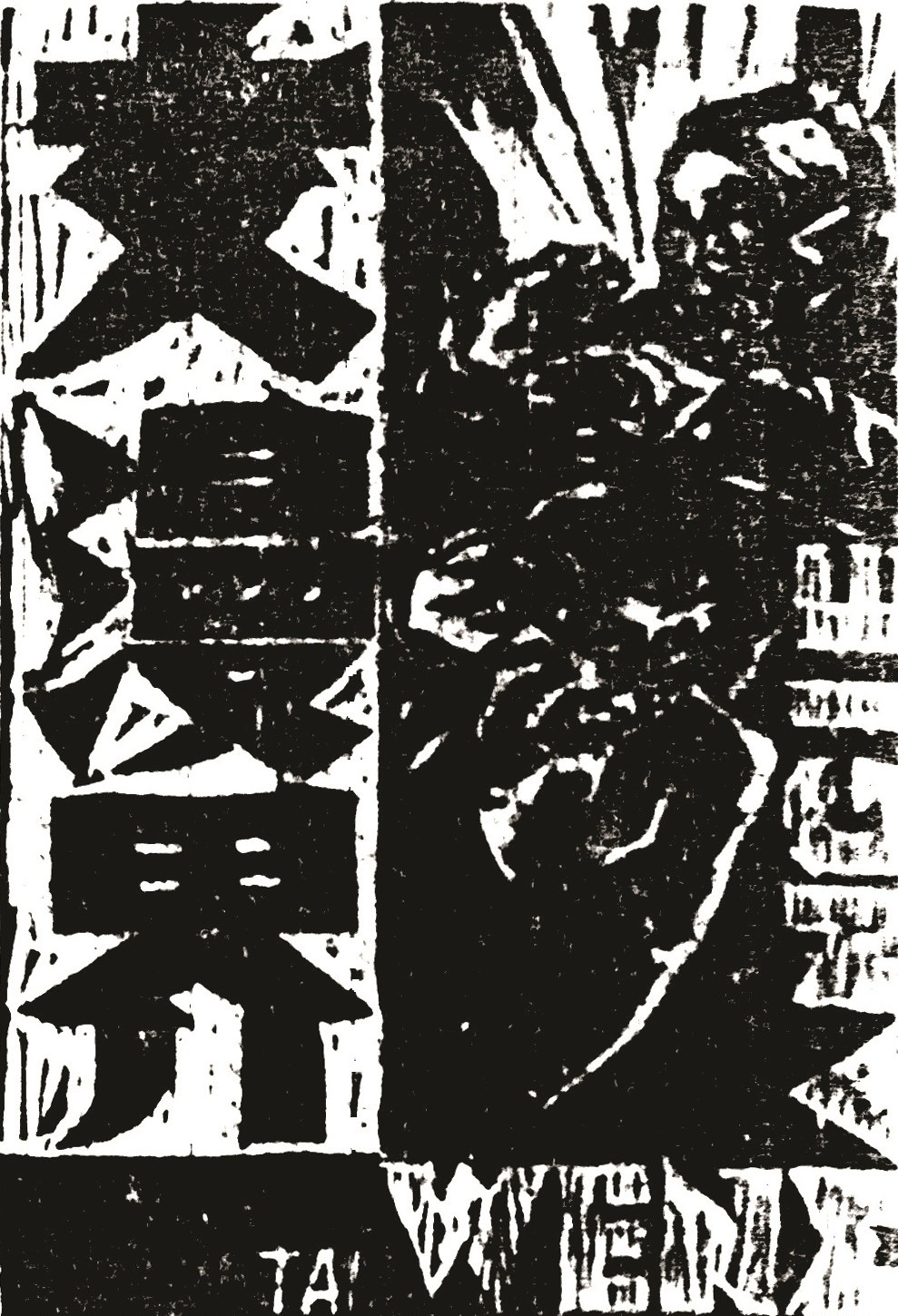
NYSP started it frst art supplement, Wenman Jie, from May to December 1936 and later Jinri Yishu from January to August 1937. During that period, readers of NYSP were exposed not only to woodcut images but also to articles related to the art form. The development of this medium mirrored China’s Modern Woodcut Movement, with Lu Xun being its chief promoter from 1929 till his death in 1936. The works of the German expressionist artist Kathe Kolwitz and the Belgian artist Frans Masereel, which were avidly introduced by Lu Xun, were often reproduced here. On top of that, a series of articles aimed at introducing the new art form in a systematic way was also published. The articles involved the discussion of the appropriateness and the objectiveness in the portrayal of scenes and events, the basic understanding of the purpose of the medium in highlighting the plight of the people in the lower strata of society and, of course, on the techniques and materials involved.

By mid-1937, woodcuts moved beyond newspapers and into exhibition halls. Numerous exhibitions were held to promote the art and later as fund-raising events for the war efforts back in China. Woodcuts became an acceptable artistic medium, exhibited alongside the more established mediums such as ink painting, photographic works and cartoons. In the new academic year starting July 1940, a woodcut lecturer was even included in the teaching staff list of NAFA (NYSP, 31 July 1940). This clearly signified the importance of the art form during that era and how through the concerted efforts of many, provided the hotbed for a quick resurgence of the practice of the woodcut medium in the post war years.
Post War Years
In the ‘Foreword’ of NAFA’s Resumption of Classes Anniversary Magazine a year after the departure of the Japanese, it was mentioned that amongst the school’s student societies, there was one that focused on the study of woodcuts (and cartoons). It went on to say that the members had produced works of considerable standards but unfortunately they were destroyed before the Occupation. While the works were lost, the skills were not. Many Chinese publications featured woodcuts produced by local artists, albeit with pseudonyms. This was necessary because the artists commented on the social and politial climate of the country and that inevitably brought about the heavy censorship of the colonial government.
One such publication was 1953’s Qing Nian Hua Ji (loosely translated as Youth Art Series). The publication featured mainly woodcuts plus oil paintings and charcoal drawings. It was edited by Choo Keng Kwang. All the artists in the publication used pseudonyms except for Chieu Shuey Fook. The other significant publication featuring woodcuts in the 1950s was 1955’s Xinma Muman Xuanji (Selection of Woodcut and Cartoons by Singapore and Malayan Artists) edited by Ho Kah Leong and cartoonist Ong Shih Cheng (pen-name — Ong Yih). The woodcut section of the book was edited by Ho while Ong selected the cartoons. One thousand copies of the book was printed and sold at $1. According to Ho, it sold very well. Ho incidentally became a PAP Member of Parliament later and, upon retirement from politics, was also the principal of his alma mater, NAFA.
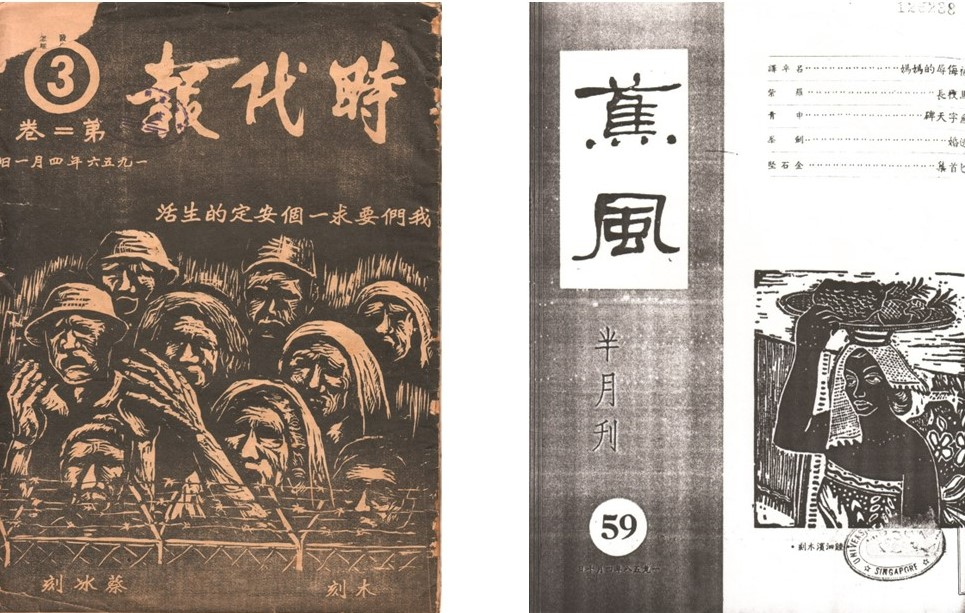
(Right) The 10 April 1958 issue of Jiao Feng with a woodcut print by Cheong Soo Pieng. All rights reserved, Jiao Feng Chu Ban Sha, 1958
Apart from these, there were also many literary publications, for example Geng Yun, that featured woodcut on their cover pages. While magazines such as Shi Dai Bao featured written articles that promoted independence and woodcuts and cartoons satirising the local political cimate, not all publications were of that nature. Others like, Jiao Feng were purely literary in its contents and had featured woodcuts by Ho Kah Leong among others that depicted the people and scenery of the region.
Perhaps in a move to realign the medium as a pure artistic expression rather than a tool of revolution, brought about by the influence of the Modern Chinese Woodcut movement advocated by Lu Xun in the 1930s, more and more artists began to capture still life and sceneries through their woodcuts. This also meant that the works were shown alongside those of other mediums in exhibition halls. One such exhibition was the Malaysia Art Exhibition of 1962 at the Victoria Memorial Hall. Amongst the many artists who participated, at least two featured their woodcuts. Lim Mu Hue showed his Back Stage and Weaving while Tan Tee Chie showed three, namely, Trengganu Sea, Birds Shop and Gossip.
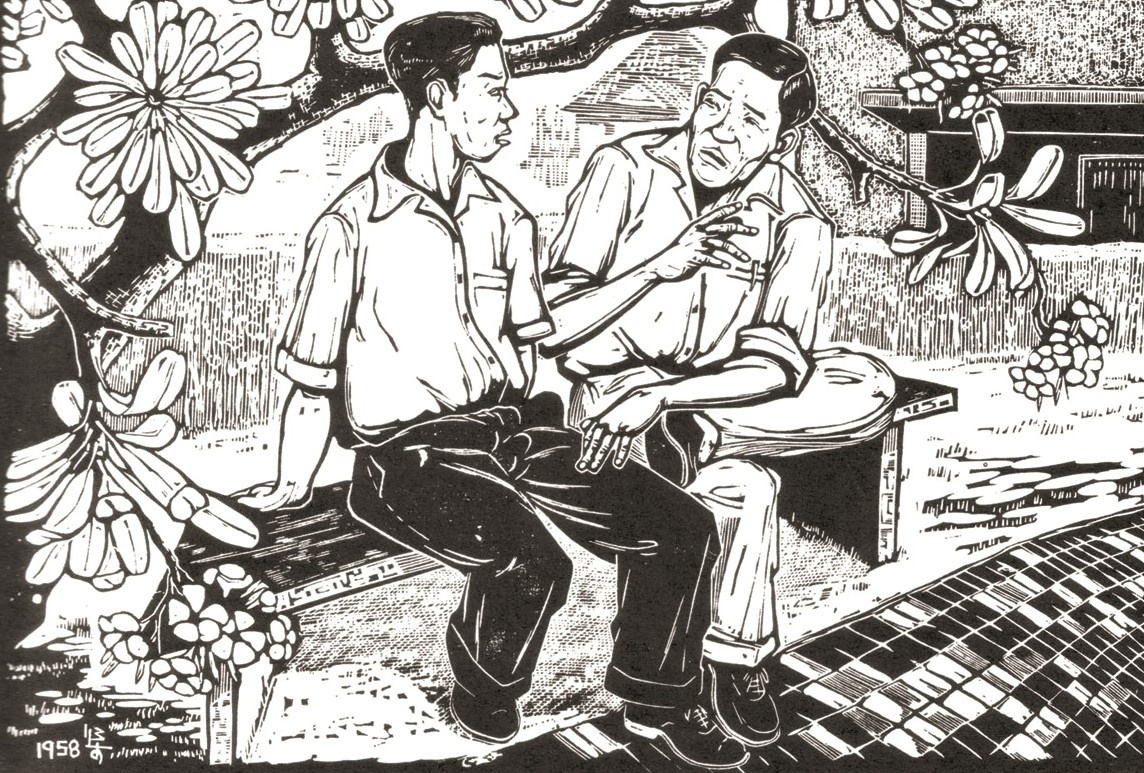
Finally on 14 October 1966 at the former National Library Lecture Hall, an exhibition dedicated solely to woodcuts was staged. The artists, good friends who studied and later taught at NAFA, Choo Keng Kwang, Foo Chee San, Lim Yew Kuan, Lim Mu Hue, See Cheen Tee and Tan Tee Chie, named their show Woodcuts. With a combined showing of 95 pieces of prints, the exhibition was opened by then Minister of State for Culture, Mr Lee Khoon Choy. The show was on till 18 October.
The exhibition also travelled to Malaysia. It was exhibited at the Pachui Art Gallery (opened by Chuang Kim Siew, a NAFA classmate of Lim Mu Hue) at the AlA Building in Kuala Lumpur between 12 —17 December that year. The opening was officiated by the Singapore High Commissioner to Malaysia, Mr Lien Ying Chow. Given the tension between Singapore and Malaysia immediately after the separation just a year earlier, such cultural ‘diplomacy’ showed that the arts was still able to connect the people of the two territories.
Perhaps the cultural imagining then was still that of xinma yijia (Singapore and Malaysia was still one family). In all, 86 pieces were shown at the KL show and according to See Ye Wah, See Cheen Tee’s daughter, they sold well.
However, the 1966 woodcut show marked the end of an era. Ironically, it was the first and the last of its kind in Singapore. Of the six artists, See Cheen Tee passed away in 1996. Though the medium was still being practised to a certain extent, local artists perhaps never really saw a need for another exhibition of woodcut prints.
Woodcuts in Singapore After 1966
Woodcuts was popular in the post war years because the medium was suitable for the publication of black and white artwork in the It was also a good way for artists to make extra ‘pocket money’ by contributing woodblock print to the press for publication, much like some artists dabbling in cartooning and caricatures then. But with the improvement of printing technology which enabled newspapers to publish in colour, woodblock prints declined in popularity among newspapers editors and artists. It was no longer ‘lucrative’ to do woodcuts as that outlet for publication in the newspapers
Not many artists were keen to follow up with doing woodblock prints in colour as it became too labour intensive and difficult. Only a few artists like See Cheen Tee, Lee Boon Wang and Tan Tee Chie excelled in this new development of the medium. The wood used for the medium was also getting hard to find in Singapore.
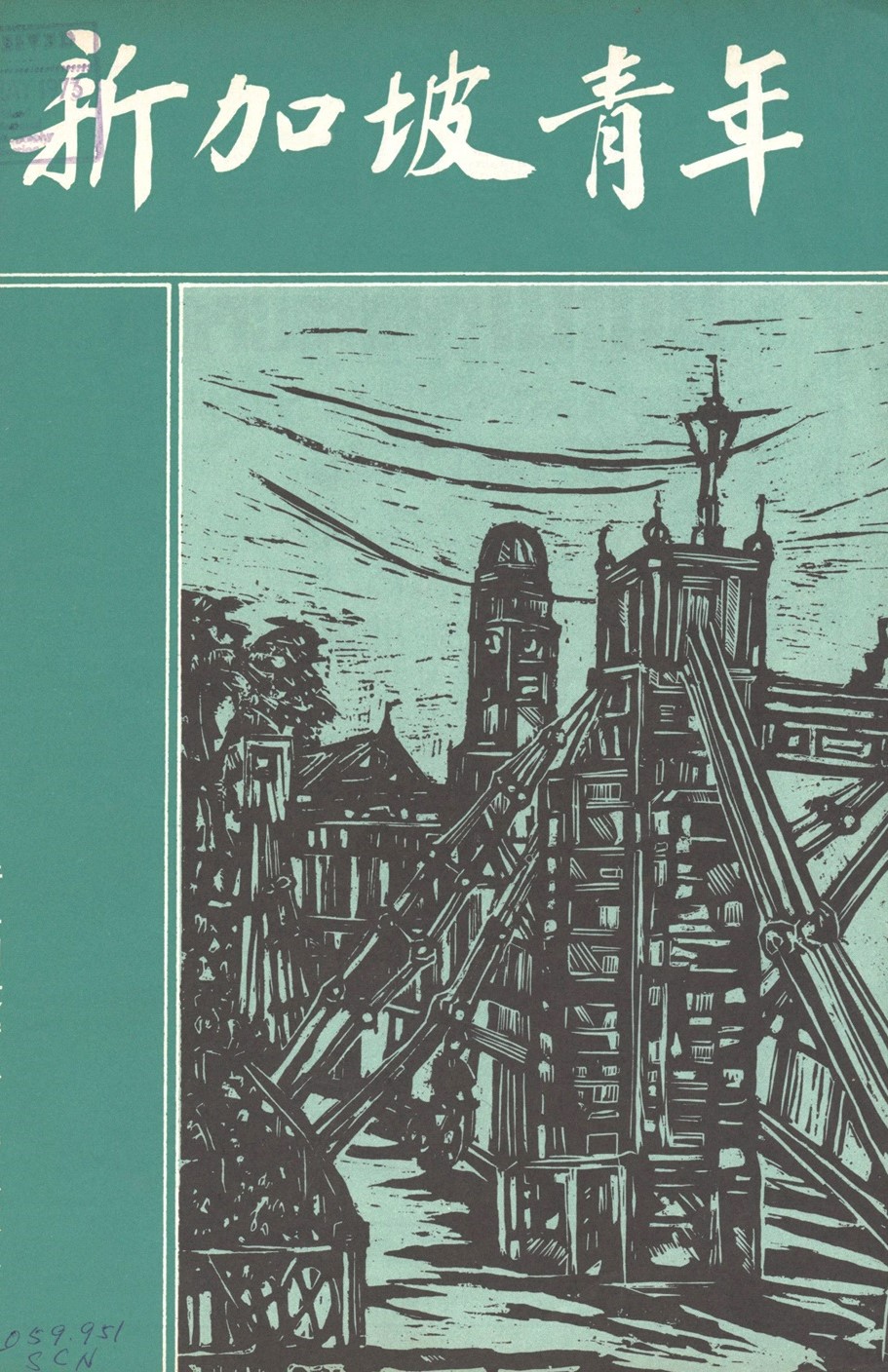
In a bid to support the practice of the woodcut medium, the Singapore Chinese Teachers’ Association’s publication, Xing Jia Bo Qing Nian (Singapore Ching Lien or Youths of Singapore) featured a woodcut print on every of its cover for the first 3D issues or so since its inception from April 1973. Most of the works were by the six artists and with others from founding editor Ho Kah Leong, Ng Yat Chuan (Huang Yiquan), Qiu Gao Peng and some of Qiu’s students from Hua Yi Secondary school. The publication continued till 2003, but from the 1990s, the prints it featured in its pages were mainly from China. Its last editor was Yeap Chong Leng.
From the 1970s to the late 1980s, woodcut was a rather popular choice for many art students of secondary schools and junior colleges as a medium for their examination art project. Publications such as Banhua Shijie (Print World) and Banhua Yishu (Print Art) from China were readily available as reference materials. However, it was the Selected Woodcuts by Tan Tee Chie published by NAFA in May 1975 that gave Singapore its first and only book on woodcuts by a local artist.
While the focus on woodcuts dwindled, printmaking as a medium did not. The Contemporary Printmaking Association was formed in 1979 to promote printrnakhg (which included etching, lithography, silk screen and etc.) as an art forrn. The Association also regularly organised local and international shows. The awareness of printmaking was given a further boost when La Salle School of the Arts offered printmaking as one of the major areas of study in the mid-1980s. In 1998, the Association changed its name to Printmaking Society (Singapore). The year also marked a significant showing of woodcuts again after a very long absence since the 1966 show when the Society co-organised with the Singapore History Museum the exhibition, ‘History through Prints: Woodblock Prints in Singapore’. The exhibition brought together the many outstanding works of our post war woodcut practitioners, rekindling many old memories and igniting the interest of a younger generation in this almost forgotten medium.
The new millennium saw a smaller scale woodcut exhibition, Singapore in Prints: 1950s to 1960s - A Historical Narrative Through Woodblock Prints, held at the National University of Singapore Museum in 2002. Earlier this year, Lim Mu Hue held a solo exhibition of woodcut works, entitled Woodcut Prints at the Hainan Clan Association, which also saw the publication of a catalogue of the same name.
MATERIALS AND PROCESSES By Foo Kwee Hong
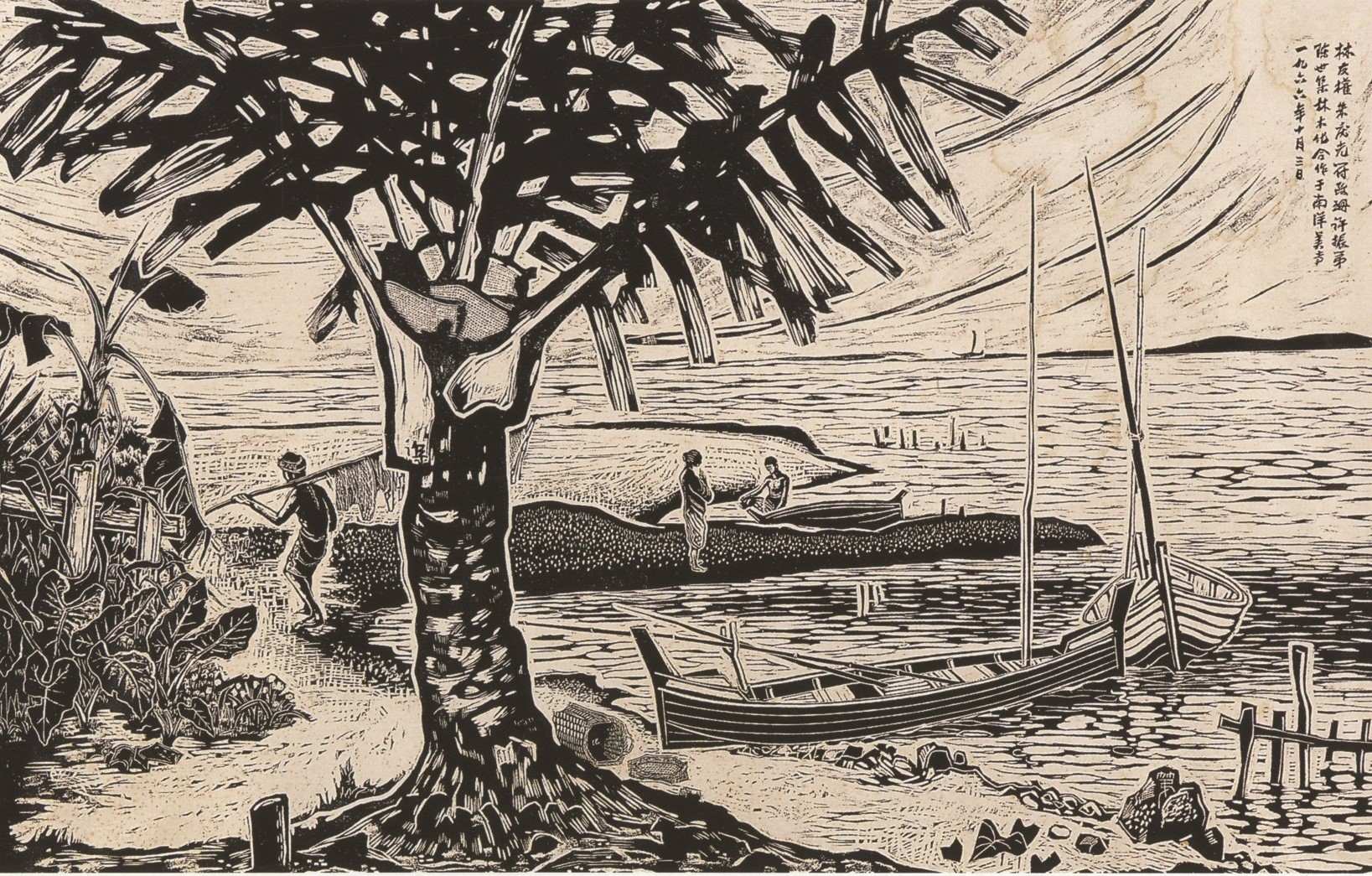 Lim Yew Kuan, Choo Keng Kwang, Foo Chen San, See Chien Tee, Tan Tea Chie and Lim Mue Hue, Seascape, 1966, woodcut print. Image courtesy of artists.
Lim Yew Kuan, Choo Keng Kwang, Foo Chen San, See Chien Tee, Tan Tea Chie and Lim Mue Hue, Seascape, 1966, woodcut print. Image courtesy of artists.Woodcuts or woodblock printing is an animated art form. A complex story could be made clear at first glance within the borders of the print and actions of real life could be clearly shown. The process to convey the story and actions depends on the wood and the cutting tools.
The wood used to produce most of the prints in the 1950s to the early 19601 was the Chinese littleleaf boxwood (huang yang mu). Obtainable from bookstores like Shanghai Book Company and Chung Hwa Book Company, it was rather costly but the boxwood blade nevertheless was the preferred in allowing the artists make cuts without chipping the wood. As the blocks were about one to two centimetres thick and very sturdy, many artists actually carved on both sides of the block while some were said to have planed the whole surface away to begin on another image.
Carving tools were not easily available then; hence artists had to either order them from abroad or make the necessary tools themselves. The v-groove and round knives in particular were converted from the spikes of umbrella.
As for the prints, they were printed using oil-based ink applied onto the blocks with a brayer then transferred onto mulberry paper (auan paper). This was done by rubbing the reverse of the paper with a baren. In this way, the inked image was transferred to the paper. The unavailability of boxwood from China due to the Cold War from the mid-1960s forced the woodcut artists to seek alternative materials. It was also during that time when Thai artist, Praphan Srisouta, exhibited his prints in Singapore in 1962. The thai artist's use of the masonite board was perhaps a contributing factor in freeing our woodcut artists from the limitation of the small sized boxwood blocks. The masonite board was evenutally used to produce the large 77 x 122 cm piece entitled Seascape in 1966 by the combined efforts of Lim Yew Kuan, Choo Keng Kwang, Foo Chen San, See Chien Tee, Tan Tea Chie and Lim Mue Hue.
1966: THE YEAR THAT WAS By Lim Cheng Tju
In 1966, Singapore celebrated its first National Day. Just a few days before that it joined the IMF and World Bank on 3rd August. The late S Rajaretnam wrote the National Pledge and in October that year, Chia Thye Poh, a Member of Parliament (MP) for the Barisan Sosialis, was arrested under the Internal Security Act and was accused of being a communist. The other MPs of Barisan Socialist, protestng against Singapore's "phoney" independence, resigned their seats and walked out of Parliament, deciding to take politics out to the streets by boycotting the by-elections held that year. In the international front, it marked the official conclusion of Konfrontasi as Singapore resumed diplomatic relations with Indonesia and it also marked the end of a chapter for the Chinese in Singapore who suffered during the Japanese Occupation as on 25 October, Japan agreed to pay $50m compensation, half as a grant and the other half as a loan. The Singapore government accepted the offer.
It was against such a backdrop that the 6-men woodcut show was exhibited at the old National Library along Stamford Road from 14th to l8th October. The image and reputation of woodcut artists in the 1950s had been one of the politicised left, a role that the new state of Singapore did not want the arts to play. Interestingly, when asked why other artists who did woodcuts were not invited to participate in the exhibition, it was revealed that it was intentional of the 6-men woodcut show to be apatical, as compared to the works of other arts groups like the Equator Art Society. Some of the works in the show reflected the social conditions of the times, but it was generally supportive of the direction the new nation would take in terms of socio-economic development. Another little known fact of the 6-men woodcut show was that it was held a a result of an earlier fund raising arts exhibition for the National Theatre Trust, which involved the artists.
THE NATIONAL LIBRARY: SUPPORTING THE VISUAL ARTS by Alicia Yeo, Reference Librarian, Lee Kong Chian Reference Library
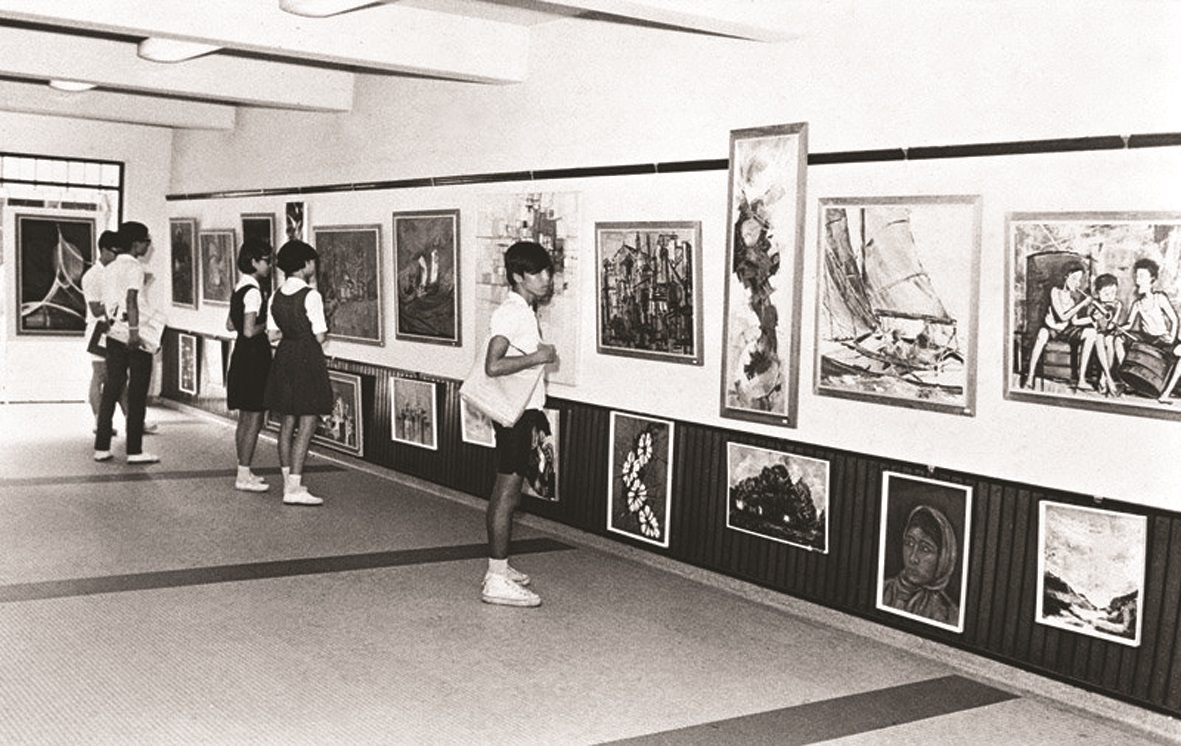 Students viewing local art display at the library's foyer in 1970. Collection of the National Library Picture Archive.
Students viewing local art display at the library's foyer in 1970. Collection of the National Library Picture Archive.The National Library is not just a place for books. It has remained a loyal supporter of the visual arts scene, even since its beginnings as the Raffles Library in the 1950s. Several local art activities and exhibitions, much like the woodcut show of 1966, were held at the library's Stamford Road building in the 1960s and 70s. It was a popular space for artist to display their works, usualy either at the library's lecture hall or the foyer. This was perhaps because there were few avenues for the public display of art in Singapore back then. Besides the library, the British Council offered alternative gallery space. Meanwhile, the National Museum Art Gallery would appear only much later in 1976.
Some local artists, now famous, who chose the library as the place to hold their first solo shows include: Anthony Poon (1963), Ng Eng Teng (1970), Goh Beng Kwan (1971) and Tan Swee Hian (1973). The Modern Art Society and Singapore Art Society had also exhibitions at the library during this period. And many may not realise that Singapore's first sculpture show was held at the library in 1967.
One particularly prominent display back in the 1960s was the Photographic Society of Singapore's 14th International Salon of Photography exhibition, which was held in May 1963 end was officiated by then Prime Minister Lee Kuan Yew. Another memorable event was the launch of the Visionary Architecture and Housing in Singapore exhibition, organised by the Housing Development Board and the Museum of Modern Art New York in March 1963, which attracted much public attention.
The library's tradition of arts support continues today. With the many art exhibitions and activities going on at the new National Library. Some examples include the recent June exhibition of sculpture by the Sculpture Society (Singapore), the Raffles Design Institute's graduation show, and the contemporary art installation being displayed currently in conjunction with the Singapore Biennale (running from September — November).
 (From Left): HDB chairman Lim Kim San, Minister for Culture S. Rajaretnam and National Library Board member Dr Lim Woo Chiang view an exhibition on Singapore Architecture at the library, March 1963. The exhibit was well received by the public (right). Collection of the National Library Picture Archive.
(From Left): HDB chairman Lim Kim San, Minister for Culture S. Rajaretnam and National Library Board member Dr Lim Woo Chiang view an exhibition on Singapore Architecture at the library, March 1963. The exhibit was well received by the public (right). Collection of the National Library Picture Archive.1954: Raffles Librarian LM Harrod works with the Singapore Art Society to exhibit paintings at the Library
1955: The Raffles Library co- organises an exhibition on book jacket designs with the Singapore Art Society and the University of Malaya, held at the British Council Hall
1957: British book design exhibition at the library
1961:"Know Our Singapore" photography exhibition sponsored by the Southeast Asia Photographic Society
1961: A centenary exhibition of paintings by Rabrindranath Tagore, organised by the Commission of India
1962: Exhibit of 33 Japanese children's paintings organised by the rotary clubs of Singapore and Nagasaki
1963: "Visionary Architecture and Housing in Singapore"
1963: 14th Singapore International Salon of Photography
1964: Singapore artist Anthony Poon holds first solo show
1966: Malayan artist Yip Hong Ngee's first one-man show
1966: Six Men woodcut prints show
1967: "Sculpture' 67" - Singapore's first sculpture show
1968: Five local artists (Sum Lai Moi, Chia Chye Wah, Lee Hoon Leng, Li Chong Chuan and Yap Chin Tong) jointly exhibit 100 paintings
1969: Penang artist Yeo Hoe Koon exhibits 33 abstract oil works
1970: Singapore sculpture Ng Eng Teng holds first solo show
1970: Three Katong convent students (Jane and Anne Wakerman and Moira Scully) exhibit their paintings
1970: Three local artists (Yu Tian Yu, Wu Fook Wang and Loy Chye Chuan) hold exhibit of paintings
1971: Singapore artist Tay Bak Koi holds solo show
1971: Singapore artist Goh Beng Kwan holds first exhibition
1971: Ceramics talk and demonstration by potter Iskandar Jalil 1971: Adult Education Board's photographic exhibition 1971: Exhibition of collage work by Mrs Rose Cherrier
1971: USA: an exhibit of artworks by American artists Bebe Williams and Mary Czectian Archard
1972: Finger painting talk and demonstration by Wu Tzai Yen
1972: Batik painting talk and demonstration by Jaffar Latiff
1972: Yeo Kim Seng exhibits 30 abstract oil paintings
1972: Ng Eng Teng holds sculpture exhibition
1972: Singapore National Photographic exhibition organised by the Photographic Society of Singapore
1972: Exhibition of batik paintings by Peter Chen
1972: Singapore Commercial Art Scoiety Exhibition
1973: Tan Swee Hian holds first solo show
1974: Michael Ong holds solo show
1975: Chinese calligraphy and paiting exhibition
1978: Singapore Youth Associations' National Chinese calligraphy and painting exhibition
1979: Ancient and modern Chinese ar exhibition organised by local art collector Lai Kong Jin
1979: Bras Basah photographic exhibition
Koh Nguang How
Lim Cheng Tju
REFERENCES
Foo Kwee Horng, “Cartoon and Woodcut Movements in Pre-War Singapore (1900–1941)” (master’s thesis, National Institute of Education, Nanyang Technological University, 2005)
Lim Cheng Tju, “Political Prints in Singapore,” Print Quarterly 21, no. 3 (September 2004): 266–81. (From JSTOR via NLB’s eResources website)
Lim Cheng Tju, “Fragments of the Past”: Political Prints of Post-war Singapore,” The Heritage Journal 2, no. 1 (2005), https://www.academia.edu/6454687/_Fragments_of_the_Past_Political_Prints_of_Post_war_Singapore.
Ministry of Culture, Singapore, Malaysia Art Exhibition: 22nd–30th September 1962, at Victoria Memorial Hall = Pameran Lukisan Malaysia (Singapore: Ministry of Culture, 1962). (Call no. RCLOS 759.9595 MAL)
Nanyang Academy of Fine Arts, Resumption of Classes Anniversary Magazine (Singapore: Nanyang Academy of Fine Arts, 1946)
NUS Museum, Singapore in Prints: 1950s to 1960s (Singapore: NUS Museum, 2002)
Printmaking Society (Singapore), Proof III (Singapore: Contemporary Printmaking Association, 2001). (From PublicationSG)
FURTHER READINGS
Chia Wai Hon, See Cheen Tee: Artist Extraordinaire (Singapore: Raffles Avenue Editions, 2001). (Call no. RSING q759.95957 SEE)
Choo Keng Kwang, The Selected Works of Choo Keng Kwang (Singapore: Nanyang Academy of Fine Arts, 2002). (Call no. RSING q759.95957 CHO)
Li Hua, Chinese Woodcuts (Beijing: Foreign Languages Press, 1995). (Call no. RART 769.951 LIH)
Lim, Mu Hue 林木化, Muhua mu ke xuan 木化木刻选 [Woodcut prints] ([Malaixiya] [马来西亚]: New Art Graphics Sdn. Bhd, 2005). (Call no. Chinese RSING q769.95957 LMH)
“Singapore Woodcarving: History and Creativity by Tan Tee Chia,” Shyue Dah Annual Magazine 1 (30 October 1986). (Call no. RSING 700.705 SDAM)

